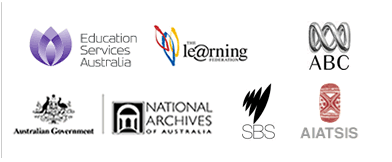This clip chosen to be G
Clip description
This clip shows the process by which the PMG must meet the needs of the media during Queen Elizabeth II’s 1954 royal tour.
Curator’s notes
The extent of the media coverage of the 1954 royal tour was, for Australia, a new phenomenon. The Post Office had the responsibility of ensuring that words and pictures, collected by the various media organisations, could be readily and speedily transmitted interstate and overseas. The clip first focuses on radio broadcast, then goes on to explain the services provided to the print media of the day.
A close-up of a teletype machine, transmitting a description of the Queen’s outfit, illustrates what was then state-of-the-art communication technology. The clip also shows photographs being transmitted using Muirhead-Jarvis picturegram equipment. The picturegram was an early form of facsimile transmission. The PMG had operated a Melbourne-Sydney picturegram service from as early as 1929, using Siemens-Karolus equipment. The service was suspended in 1942 due to equipment maintenance difficulties. A new service, using Muirhead-Jarvis equipment, was established in 1950. This service linked all the states, and connected with the international picturegram service provided by the recently established Overseas Telecommunications Commission (OTC).
Teacher’s notes
provided by 

This clip shows the role of the Postmaster-General’s Department (PMG) in facilitating media coverage of the 1954 Royal Tour of Australia. It shows one of the press bureaus set up at post offices in each capital city and fitted with up-to-date equipment to allow local and international media to dispatch their reports. The narrator says landlines were installed for nationwide radio broadcasts. An uplifting music score accompanies the clip, which begins with Queen Elizabeth II’s arrival in Sydney and concludes with newspaper photographs of the visit.
Educational value points
- The PMG, which sponsored this film, was responsible for managing Australia’s postal and telecommunication services and hence had responsibility for ensuring that national and international media coverage of the 1954 Royal Tour was possible. The size of the Tour and the demand of media outlets for up-to-the-minute coverage made this a huge task and required a year of intense planning and the installation of new equipment and infrastructure.
- The 1954 Royal Tour was the first visit to Australia by a reigning monarch and the clip reflects the support within Australia for a constitutional monarchy, a strong identification with Britain and the way the young and glamorous Queen captivated the public. About 75 per cent of Australians went to see the newly crowned Queen Elizabeth II (1926–) during the eight-week tour, which began on 3 February and visited every state and territory except the Northern Territory.
- In 1954 there was no television coverage in Australia and the only means of electronic communication nationally and internationally was by telephone, telegram or telex. The telex was a new technology introduced by the PMG in 1954 and, as seen in the clip, involved a message sent from a telex machine via telephone lines and printed out onto a strip of paper by a teleprinter. International communication relied on radio transmissions or undersea cables.
- Photographs were transmitted by picturegram, a technology that involved wrapping the photograph around a cylinder and focusing a spot of light on the photograph as it turned. The light was picked up by a photosensitive selenium cell, which then converted it into electric currents to be sent along the telephone lines. At the receiver end a pencil of light used the incoming signals to trace out the image on photographic paper, which was then developed.
- ABC (Australian Broadcasting Commission) Radio provided live coverage of parts of the Royal Tour and the PMG, which at the time was responsible for the technical side of the ABC, laid landlines to transmit the broadcasts nationwide and fitted out mobile vans so that reporters stationed along the route of the Tour could relay reports back to the station. Radio coverage provided by the ABC included the opening of Parliament in Canberra by the Queen.
Thanks to the generosity of the rights holders, we are able to offer The media from the sponsored film Australia Post – Royal Tour as a high quality video download.
To play the downloadable video, you need QuickTime 7.0, VLC, or similar.
You must read and agree to the following terms and conditions before downloading the clip:
australianscreen is produced by the National Film and Sound Archive. By using the website you agree to comply with the terms and conditions described elsewhere on this site. The NFSA may amend the 'Conditions of Use’ from time to time without notice.
All materials on the site, including but not limited to text, video clips, audio clips, designs, logos, illustrations and still images, are protected by the Copyright Laws of Australia and international conventions.
When you access australianscreen you agree that:
- You may retrieve materials for information only.
- You may download materials for your personal use or for non-commercial educational purposes, but you must not publish them elsewhere or redistribute clips in any way.
- You may embed the clip for non-commercial educational purposes including for use on a school intranet site or a school resource catalogue.
- The National Film and Sound Archive’s permission must be sought to amend any information in the materials, unless otherwise stated in notices throughout the Site.
All other rights reserved.
ANY UNAUTHORISED USE OF MATERIAL ON THIS SITE MAY RESULT IN CIVIL AND CRIMINAL LIABILITY.
This clip is available in the following configurations:
| File name | Size | Quality | Suitability |
|
apostroy2_pr.mp4
|
Large: 20.5MB |
High |
Optimised for full-screen display on a fast computer. |
|
apostroy2_bb.mp4
|
Medium: 9.7MB |
Medium |
Can be displayed full screen. Also suitable for video iPods. |
Right-click on the links above to download video files to your computer.
Thanks to the generosity of the rights holders, we are able to offer this clip in an embeddable format for personal or non-commercial educational use in full form on your own website or your own blog.
You must read and agree to the following terms and conditions before embedding the clip:
australianscreen is produced by the National Film and Sound Archive. By using the website you agree to comply with the terms and conditions described elsewhere on this site. The NFSA may amend the 'Conditions of Use’ from time to time without notice.
All materials on the site, including but not limited to text, video clips, audio clips, designs, logos, illustrations and still images, are protected by the Copyright Laws of Australia and international conventions.
When you access australianscreen you agree that:
- You may retrieve materials for information only.
- You may download materials for your personal use or for non-commercial educational purposes, but you must not publish them elsewhere or redistribute clips in any way.
- You may embed the clip for non-commercial educational purposes including for use on a school intranet site or a school resource catalogue.
- The National Film and Sound Archive’s permission must be sought to amend any information in the materials, unless otherwise stated in notices throughout the Site.
All other rights reserved.
ANY UNAUTHORISED USE OF MATERIAL ON THIS SITE MAY RESULT IN CIVIL AND CRIMINAL LIABILITY.
Copy and paste the following code into your own web page to embed this clip:




 Share
Share





